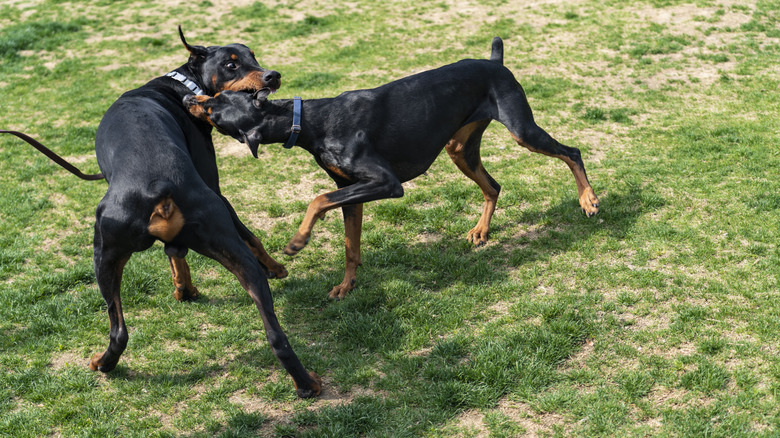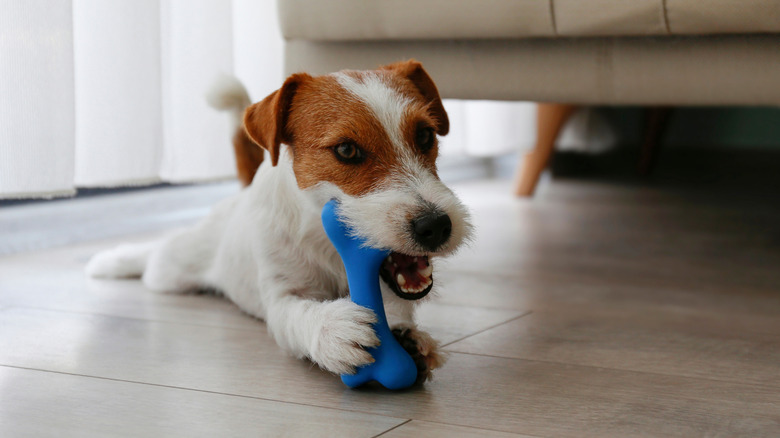My Dog Keeps Chewing My Other Dog's Collar
Most dogs love to chew on things, including items they shouldn't, like the remote control, your shoes, or even your other dog's collar. If you have a pup that can't resist engaging in this activity, you need to take both preventive and corrective measures. After consistently training your dog, you can gradually diminish their urge to chew on collars and provide healthier alternatives for when they need to get their fix.
When a dog chews on another's collar, it can pose several risks for both canines and lead to some inconveniences for you. The chewing dog may accidentally bite their companion, which can either result in injury or just really upset them. The chewer may also get their teeth stuck in a portion of the collar, resulting in discomfort for them and a strangling hazard for the other pooch.
Another potential consequence of this undesirable behavior is the destruction of the collar and an unplanned trip to the vet. With consistent chewing, it's possible for your four-legged friend to gnaw completely through the collar until it breaks in half, leaving you seeking a replacement. Or, if one or both of your dogs were to become injured, you may have to deal with the unexpected cost of urgent veterinary care. The good news is, there are several ways to prevent this dangerous chewing behavior and keep both of your fur babies safe.
How to to prevent your dog from chewing on another's collar
To stop chewing, consider making your dog's collar less appealing. Taste deterrents, available at pet stores, leave a markedly unpleasant flavor — usually bitter or spicy — on whatever item you spray them on. Just be sure to follow the instructions on the bottle, which typically require periodic reapplication. Alternatively, adding metal embellishments on the collar can also work, since the hard surfaces won't be as attractive as the softer collar fabric.
You can also try verbally correcting the behavior every time you see it. As soon as you notice your pup starting to nibble on the other dog's collar, use words like "no," "leave it," or whatever command you typically favor when they misbehave. When verbally correcting bad behavior in a dog, you have to act fast. Otherwise, they won't make the connection between the transgression and your correction. If necessary, do this in conjunction with a tap on the behind or the neck, to get their attention.
Distracting your dog with a super tough chew toy that will keep them busy is also a sound strategy. Your canine companion may simply be chewing the other dog's collar because they want something to gnaw on, so give them an another option. When they chew on it instead of the collar, lavish your dog with praise. Doing this consistently slowly teaches them that collar-chewing gets negative reactions, but toy chewing gets positive ones.

